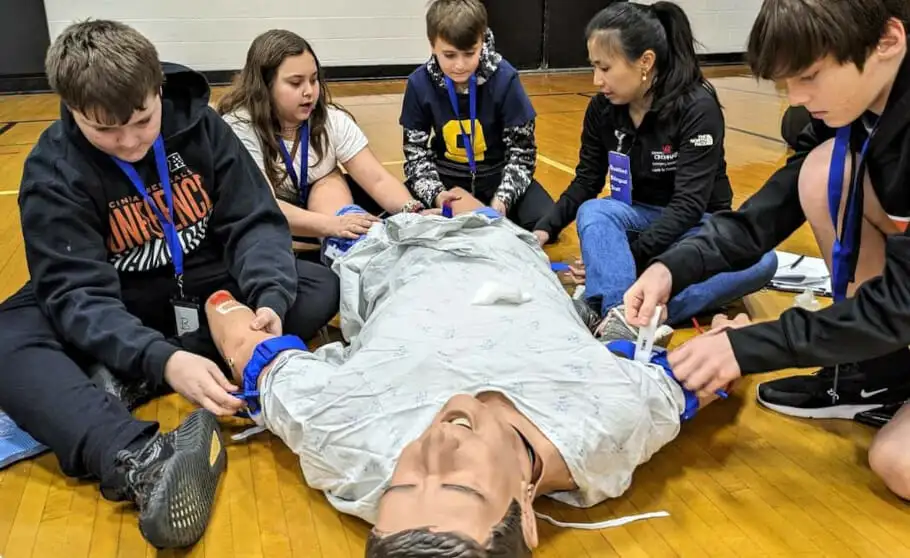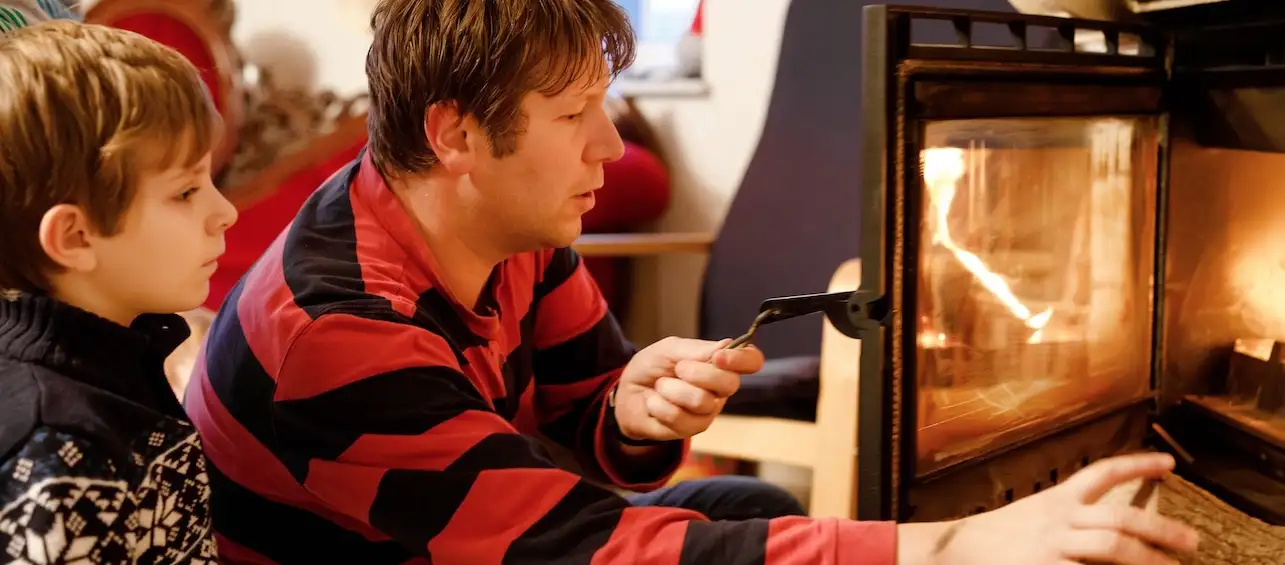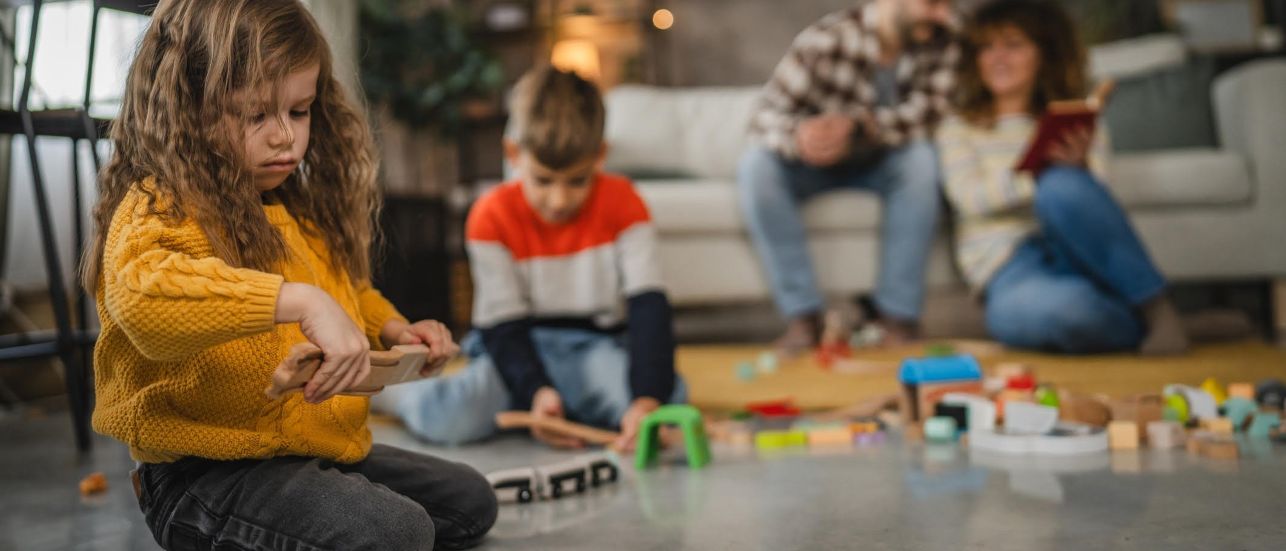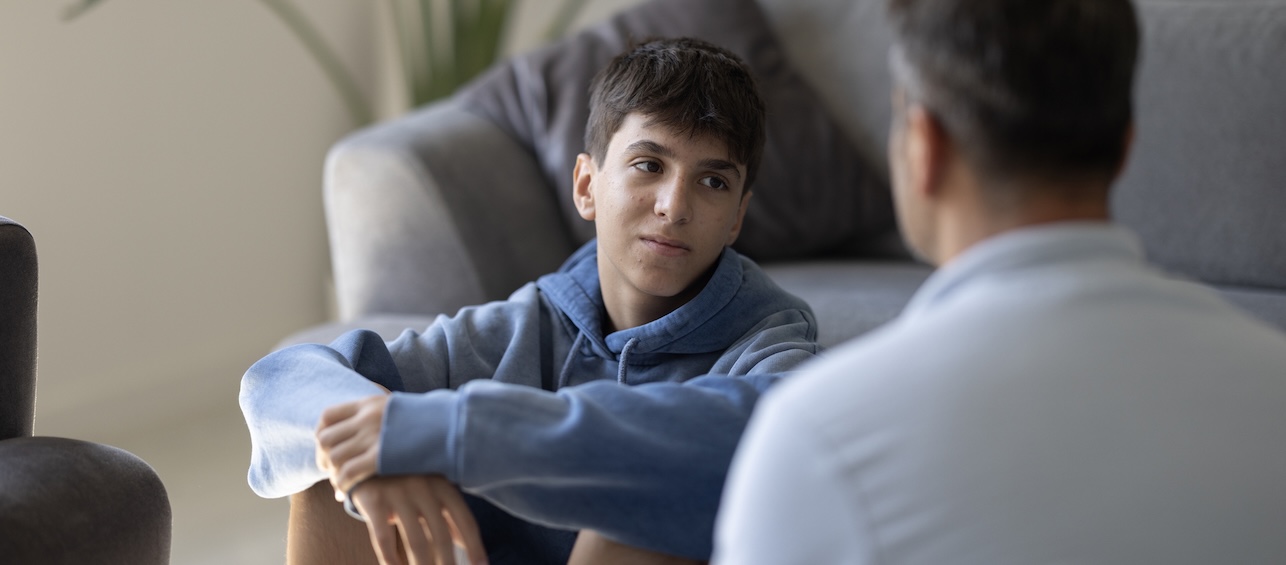The short answer is: earlier than you probably think! Kids can save lives, just like adults. Some of the simplest skills, such as calling 911, can be taught to preschoolers. And studies have shown that children as young as nine can learn and retain cardiopulmonary resuscitation (CPR) skills.
Having conversations around emergencies, bleeding and CPR can make kids understandably worried, but gaining these skills may help them feel empowered to respond and help a friend or loved one. Here are the skills they can learn:
Kids Can Learn Valuable First Aid Skills
Injuries can happen anywhere – outdoors, in the home, at school – and kids can often be the closest person to the one who is injured. Learning first aid skills can help prevent further injury or even save the life of another person. Kids can learn how to dial 911, what constitutes an emergency, what is inside a first aid kit, how to recognize if a person is not breathing or acting normally, and how to care for minor bleeding wounds.
Kids Can Administer CPR
Currently, CPR training is a high school graduation requirement in 43 states, but studies have shown that kids as young as nine can learn and retain CPR skills. When initiated early, CPR can double or even triple the chances of someone surviving cardiopulmonary arrest while waiting for first responders to arrive.
According to the American Heart Association, more than 350,000 cardiac arrests occur outside of hospitals each year, with the majority of them happening at home or in public settings. This means that your child could even help you or a family member!
Kids Can Learn How to Control Bleeding
Trauma is the leading cause of death for Americans under the age of 45 and uncontrolled bleeding accounts for 50% of preventable deaths. Learning how to apply constant pressure or using a tourniquet can save a life.
However, there are currently no specific guidelines around what age is appropriate to teach bleeding control skills to children. That said, at Cincinnati Children’s we have successfully trained almost 500 students ages 8-14 from the Oak Hills Local School District on bleeding control skills and CPR. We are currently studying the youngest age children can learn how to apply a tourniquet for bleeding control.
Where to Learn
Children are so eager to learn, and the best part is that they will likely want to teach their friends and family members the life-saving skills that they’ve gained. So where and how do you start? Check out the following organizations to learn more about their public education programs and associated age requirements:
American Heart Association CPR & First Aid
Red Cross Training | Take a Class | Red Cross
Project ADAM National
Project ADAM Greater Cincinnati
STOP THE BLEED – Save a Life | Stop The Bleed






